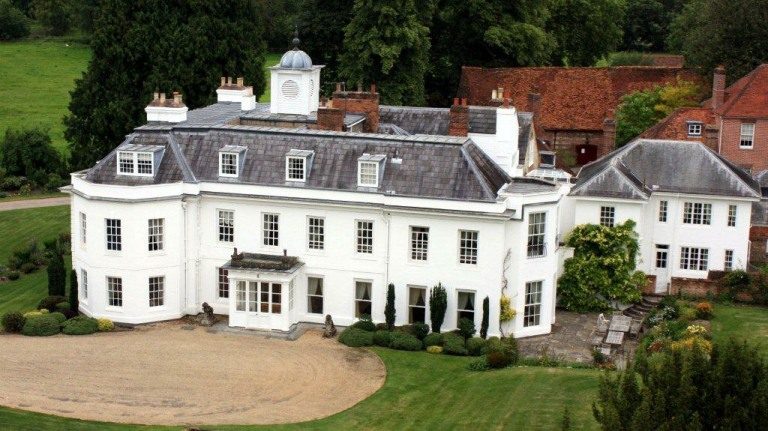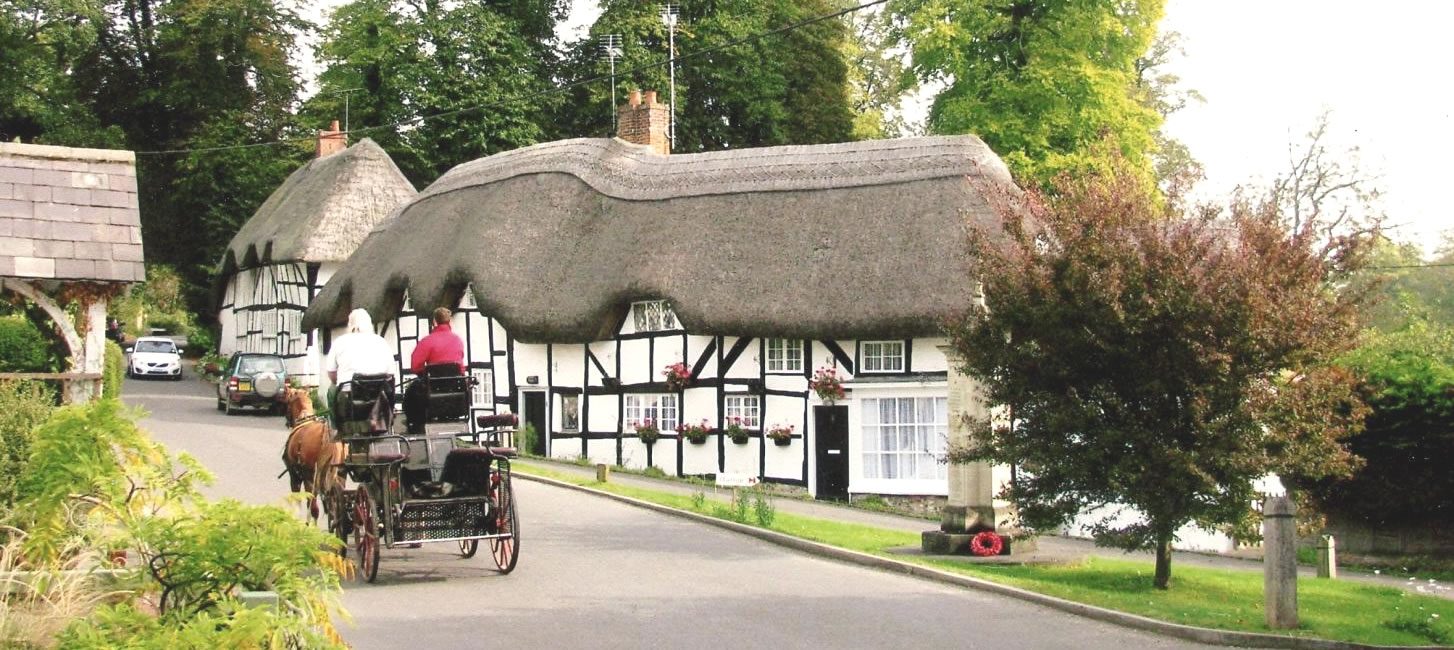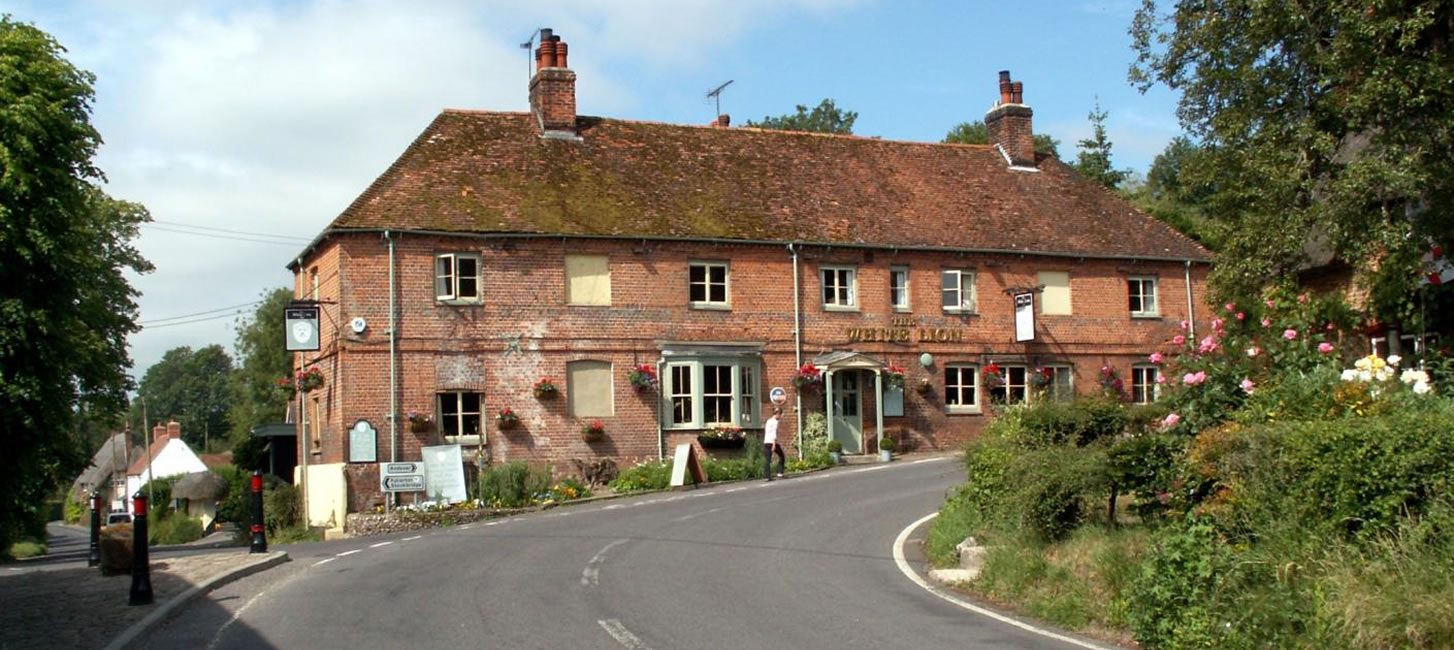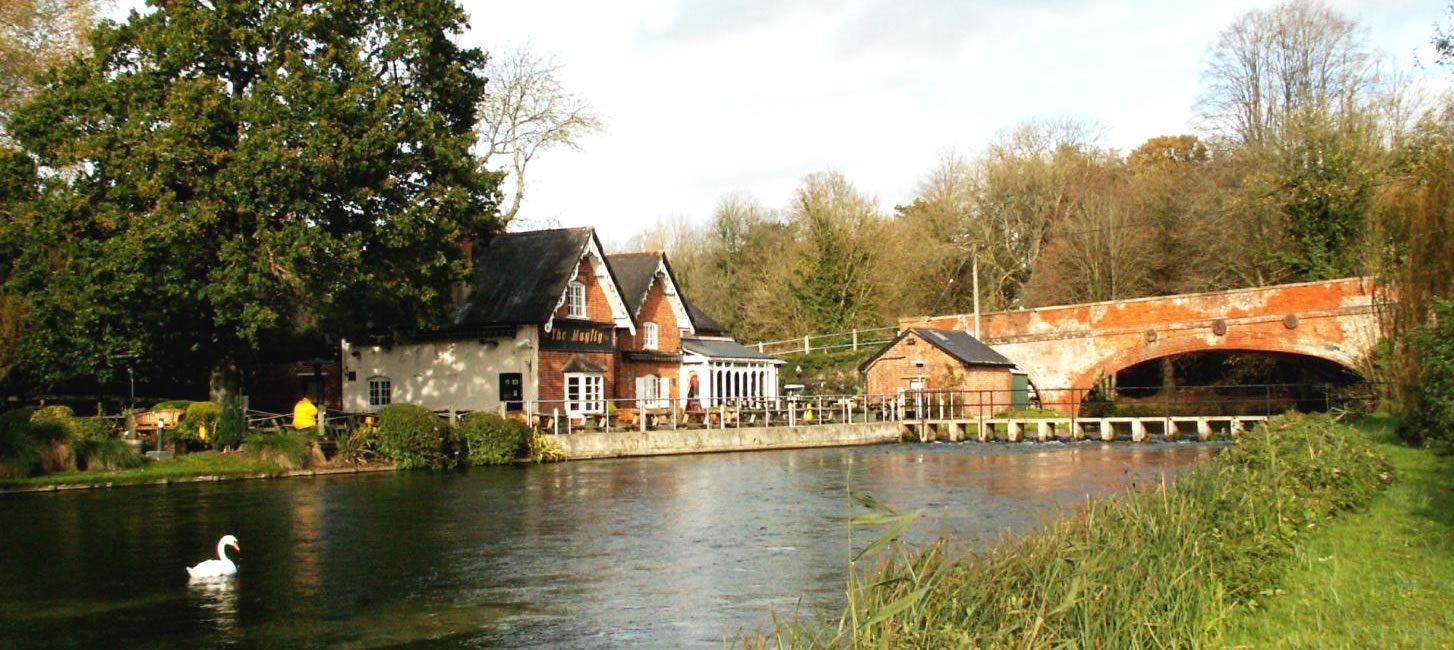
Wherwell Priory
Externally, Wherwell Priory appears to be early Georgian in style, but it was actually built in two different periods. The central block’ is believed to have been built in the mid C17th Caroline era. The north facing Georgian wing, with Tuscan style porch and shapely white cupola on the roof, was added later. Externally, the Priory portrays its familiar white facade, but is actually built of brick throughout with patches of flint in minor walls. The Priory is built on the site of Wherwell Abbey, founded by Queen Elfrida in 986, demolished by King Henry VIII in 1649 and traded to Lord De La Warr in exchange for five Manors in Sussex. The oldest building on the Estate is the stable block behind the Priory. With its banded flint and brick and some chalk blocks, it is believed to have been the mid C13th Abbey Infirmary.

Wherwell Pound Tree and War Memorial
Stretching back 100 years, Wherwell boasted three general stores, a forge, two cobblers, a laundry, two public houses, two general builders, a tea shop, dispensary and midwife, and two coal merchants. The shop, pub and post office in the High Street was run by Mr & Mrs Alfred Olliff. Their baker was Mr Hams from Tovey’s Cottage and beer was supplied by Simmonds Brewery; the public house part closed in 1949. The cottage opposite, on the curve, has been used for a mixture of trades – butchers, crockery and finally a shoe shop. The War Memorial is triangular and records those who died, and those who served, in both the Great Wars.

The White Lion Inn, Wherwell
There has been an Inn on this site, serving travellers on the toll road between Andover and Winchester, since about 1612. The present building is mainly 18th Century. The inn sign has variously portrayed a White Lion rampant, from the coat-of-arms of Sir Thomas West. He was Lord De la Warr, who acquired, for his wife, Wherwell Abbey and estate from Henry VIII, in exchange for some land in Sussex. In 1618, he set sail to Virginia but died at sea; the river and US State were named Delaware in his honour. The Inn has been variously used as a Courtroom, Auction Room, mortuary (during construction of the railway) and stabling for trace horses which assisted coaches up the Old Hill before the hair-pin bend was constructed in 1838.

The Mayfly Inn, Testcombe (Wherwell)
Thomas Strong leased (1858) and then purchased (1875) a brewery at The Horse Fair, Romsey, together with 23 licensed houses. When Thomas Strong died in 1886, his executors sold the business to David Faber. Strong & Co of Romsey Ltd was registered as a company in 1894, and progressively acquired breweries and licensed and tied houses in Hampshire and neighbouring counties. In 1955 Strong & Co became an associated company of the Whitbread Group, leading to a complete takeover in 1968 and cessation of brewing at Romsey in 1981. The Weyhill Brewery was definitely part of Strong & Co. in 1888 and may have survived as late as 1926. Inn Keepers at the Seven Stars were George Fifield (1851), William Fifield (1861), Jacob Neville (1871 & 1881), William Webb (1891 & 1901) and George Hayes (1911). The Inn became The Mayfly’ in the late 1970’s; Barry and Julie Lane took over from Julie Tuckett in 1986.





No Comments
Add a comment about this page